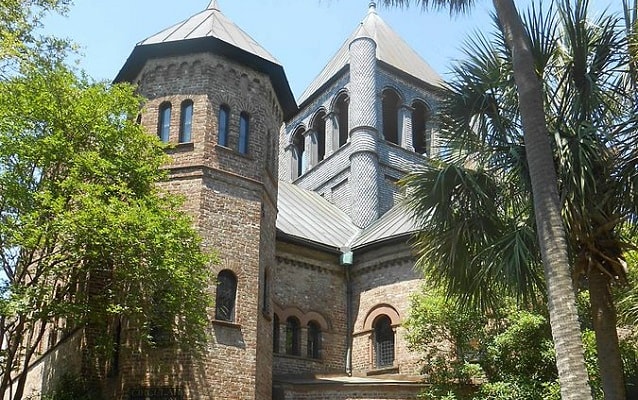Last updated: May 29, 2018
Place
Circular Congregational Church and Parish House

Photo taken by ProfReader, CC BY-SA 3.0, https://commons.wikimedia.org
The Circular Congregational Church, a National Historic Landmark, is one of the few examples in Charleston of the adaptation of the Romanesque style that was made popular by architect Henry Hobson Richardson. The Church is an excellent example of this architectural style in its massing, broad roof plane, ribbons of windows and openings, short tower, and large arched entry. The present building is the third structure to be built on this site, and was constructed circa 1892. In spite of its name, the plan of the church is more complex than circular; shaped like a cloverleaf with three semi-circular parts and one rectangular.
English Congregationalists, Scotch and Irish Presbyterians, and French Huguenots of the original settlement of Charles Town founded this dissenting congregation, known as the Independent Church, around 1681. Their first church building, erected before 1695, was known as the White Meeting House, for which Meeting Street was named. A second meeting house was built at this site in 1732. In 1804 to 1806 this church was replaced by a circular structure designed by architect Robert Mills, often referred to as the first professionally trained American architect, and a Charleston native. At this time, Mills also designed the Parish House, a good example of his ability to create Greek Revival temples of small proportions. The present church is named for Mill's earlier church, which burned during a 1861 fire, and stood in ruins until the 1886 earthquake destroyed it completely. Services were held in the Parish House until the current church was completed. Designed by architects Stevenson and Green, the Richardsonian Romanesque church was constructed as the city was rebuilding after that earthquake and reused bricks from the older structure. The graveyard is the city's oldest burial ground with one monument remaining from the 17th century. Today, Circular Congregational Church is a congregation of the United Church of Christ and has an ecumenical relationship with the Presbyterian Church USA.
